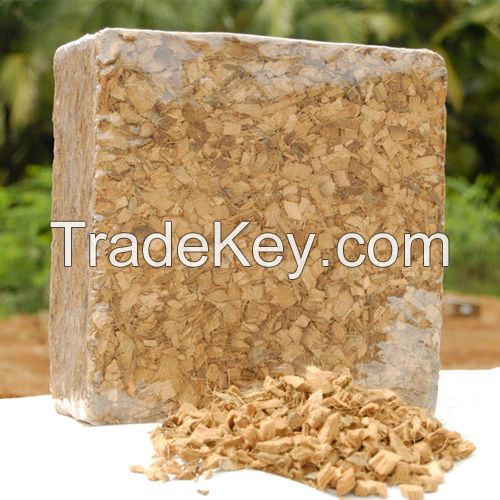Coconut husk chips are produced from the husks at the outer layer
of the coconut nut which consists of long fibers and sponge-like
pith particles. After being separated from the nut, the coconut
husks are cut into small pieces of 0.7 to 1.*5 centimeters.
Coconut husk chips are natural moist keepers who distribute water
evenly and resist excess saturation. It can also prevent insects
and harmful fungi, which creates a favorable environment for
plants to grow. Due to their unique properties, coconut husk
chips are becoming more popular among orchid growers as an
ultimate alternative for bark-based growing medium.
Retaining moisture to protect soil
Preventing the growth of insects and fungi
Acting as a perfect alternative for bark-based growing
medium
Mainly used in growing orchid
Excellent drainage, high cation exchange capacity (CEC).
Cuts down fertilizer application up to *0%.
Wet coconut husk chips hold water and air like a sponge
Exceptionally clean, uniform, and no
wastage
Small Fruit Growers
Thanks to the properties of cocopeat it is used increasingly
for the cultivation of strawberries, blueberries, blackberries,
and raspberries. Because plants such as strawberries are
extremely sensitive, the buffering and the physical properties
of Coco must meet stringent requirements.
Flower Growers
The rose was one of the first plants to be cultivated
professionally on cocopeat.
Because roses grow on the same substrate for an average of five
years, the Dutch Planting concluded that, with such stability,
this substrate would be suitable for other plants as well. Now,
twenty years later, a lot of other plants are grown on
cocopeat.
When the medium is used loosely in buckets and troughs, it is
possible to buy Cocopeat from any producer of growing media. In
some cases, it can be bought directly from Dutch Planting
Increased Optima Grow-bags are being used.
These covered bags of compressed cocopeat are available in many
sizes and physical structures.
Growers often also use the coarser varieties of cocopeat, such
as Coco Chips Fine and Medium, which can be used in pots and
containers.
To avoid disappointment the buffered material is often the
preferred choice. It is especially suited to plants that are
sensitive to calcium deficiency.
Vegetable Growers
For years vegetables have been cultivated with cocopeat as a
growing medium. When the medium is used loosely in buckets or
troughs, it is possible to buy Cocopeat from any producer of
growing media. In some cases, it can be bought directly from
Dutch Planting
Increased Optima Grow-bags are being used.
These covered bags of compressed cocopeat are available in many
sizes and physical structures.
To avoid disappointment the buffered material is often the
preferred choice. It is especially suited to plants that are
sensitive to calcium deficiency.
Producers of Growing Media
The supplier of substrates to professional horticulture knows
like no one else how important it is to use safe raw
materials.
The tiniest bit of the wrong raw material can affect the
quality of the product.
Dutch Planting is very aware that reliability is paramount.
On top of our own monitoring, for which we have gained a solid
reputation over the last *0 years, our cocopeat products are
also tested by RHP.
Several producers stipulate this as a minimum requirement for
their raw materials.


